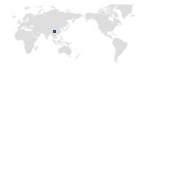


The Immigration and Nationality Act (INA) defines a child as a person who is both unmarried and under 21 years old. If someone applies for lawful permanent resident (LPR) status as a child but turns 21 before being approved for LPR status (also known as getting a Green Card), that person can no longer be considered a child for immigration purposes. This situation is commonly referred to as "aging out" and often means that these applicants would have to file a new petition or application, wait even longer to get a Green Card, or may no longer be eligible for a Green Card.
Congress recognized that many children were aging out due to large USCIS processing backlogs, so it enacted the Child Status Protection Act (CSPA) to protect certain children from aging out. The CSPA went into effect on August 6, 2002.
CSPA does not change the definition of a child. Instead, CSPA provides a method for calculating a person's age to see if they meet the definition of a child for immigration purposes. The calculated age is the child's "CSPA age." This allows some people to remain classified as children beyond their 21st birthday. However, CSPA does not change the requirement that you must be unmarried in order to remain eligible for classification as a child.
CSPA Applicability and Eligibility
CSPA applies only to the following people:
-Immediate relatives;
-Family-sponsored preference principal applicants and derivative applicants;
-Violence Against Women Act (VAWA) self-petitioners and derivative applicants;
-Employment-based preference derivative applicants;
-Diversity Immigrant Visa (DV) derivative applicants;
-Derivative refugees; and
-Derivative asylees.
CSPA for Immediate Relatives
If you are an immediate relative, a VAWA self-petitioning abused spouse or child of a U.S. citizen, or a derivative child of a VAWA self-petitioning abused spouse or child of a U.S. citizen, your age is frozen on the date the Form I-130 or Form I-360 is filed. If you were under the age of 21 at the time the petition was filed, you are eligible for CSPA and will not age out. However, you must remain unmarried in order to qualify.
CSPA for Family and Employment Preference
If you are a family preference (including VAWA), employment-based preference, your CSPA age is calculated by subtracting the number of days your petition was pending (pending time) from your age on the date an immigrant visa becomes available to you (age at time of visa availability). However, you must remain unmarried in order to qualify.
The formula for calculating CSPA age is as follows:
Age at Time of Visa Availability - Pending Time = CSPA Age
Example:
You are 21 years and 4 months old when an immigrant visa becomes available to you. Your petition was pending for 6 months. Your CSPA age is calculated as follows:
21 years and 4 months - 6 months = 20 years and 10 months
Age at Time of Visa Availability
The date the visa is considered available is the later of these two dates:
-The date the petition was approved; or
-The first day of the month of the Department of State Visa Bulletin that indicates that a visa is available for you in the Final Action Dates chart.
Pending Time
The length of time a petition was pending (pending time) is the number of days between the date that it is properly filed (filing date) and the approval date. The formula determining the length of time the petition was pending is as follows:
Approval Date - Filing Date = Pending Time
Example:
Your mother filed a petition for you on February 1, 2016. USCIS approved the petition on August 1, 2016.
August 1, 2016 - February 1, 2016 = 6 months
Limited CSPA Coverage for K-2 Nonimmigrants
While K nonimmigrants are not covered under CSPA, K-2 and K-4 nonimmigrants may benefit from CSPA under certain limited circumstances.
As a K-2 nonimmigrant (child of a K-1 nonimmigrant who is the fiancé(e) of a U.S. citizen), you typically get a Green Card based on your admission into the U.S. with a K-2 visa and your K-1 parent's marriage to the U.S. citizen petitioner within 90 days of being admitted to the U.S. As long as you were under 21 when you were admitted to the United States as a K-2 nonimmigrant, you will not age out of eligibility for a Green Card. In these circumstances, you are not eligible for and do not need CSPA in order to get a Green Card.
You are only eligible for CSPA if you are the beneficiary of a Form I-130, Petition for Alien Relative. In most cases, you do not need a Form I-130 to get a Green Card if you are a K-2 nonimmigrant. However, if your stepparent and your K-1 nonimmigrant parent did not marry within 90 days (a requirement for getting a Green Card based on K-1 and K-2 nonimmigrant status), your stepparent might choose to file a Form I-130 for you. When your stepparent files a Form I-130 for you, you become an immediate relative who can use the CSPA when applying for a Green Card.
In order to qualify as a stepchild, the marriage between your U.S. citizen stepparent and your K‑1 nonimmigrant parent must have occurred before your 18th birthday. Since your age "freezes" on the date your stepparent files the Form I-130, you may benefit from the CSPA as long as your stepparent files the Form I-130 before your 21st birthday.